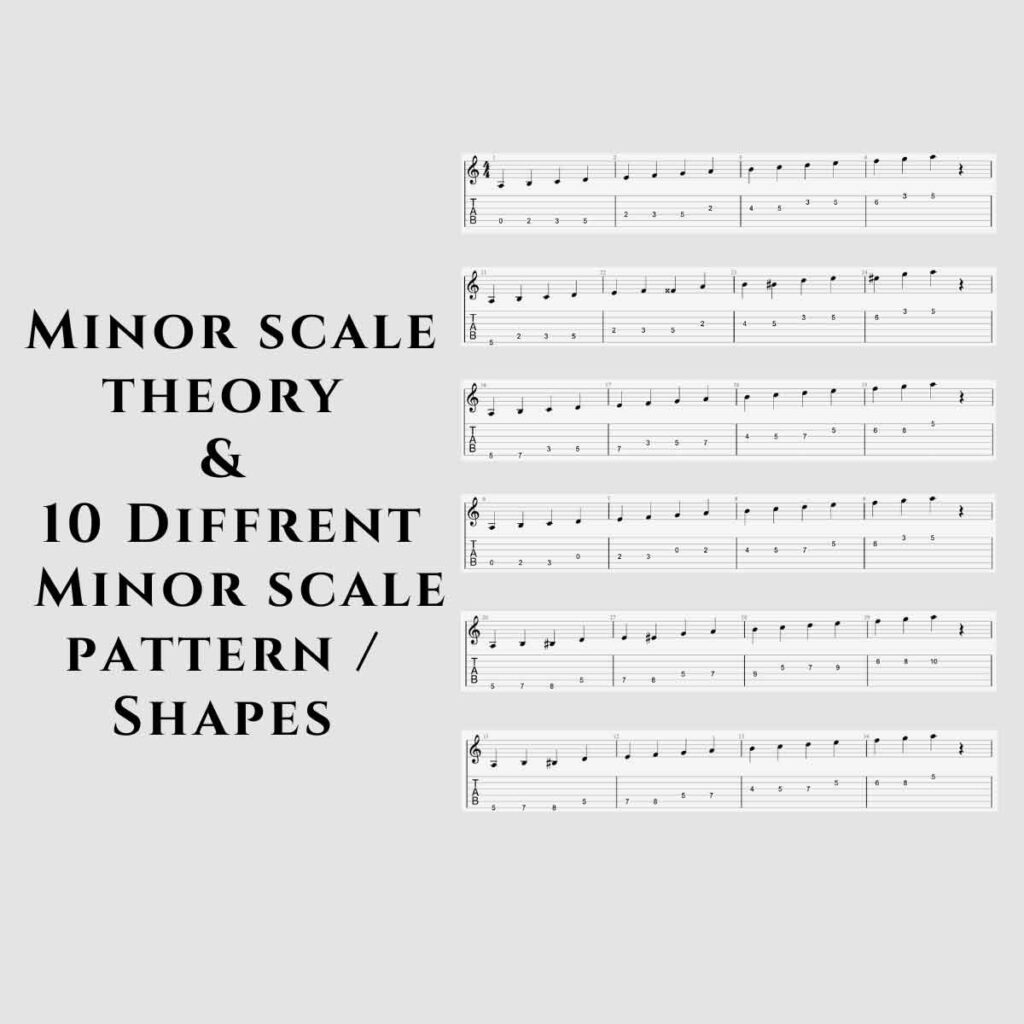The minor scale is a fundamental concept in music theory and is used in a variety of musical genres, from classical to pop to jazz. The minor scale has a distinct character that sets it apart from its major counterpart. It can evoke feelings of sadness, melancholy, or mystery, making it a popular choice for composers and songwriters looking to create an emotional impact. Its important to learn diffrent minor scale shape / positions so that you can be fluent with phrasing using for example a minor scale shape.
Music Theory of a Minor Scale: The minor scale is based on a specific sequence of intervals. Or distances between notes. In Western music theory, there are three types of minor scales: natural minor, harmonic minor, and melodic minor.
The natural minor scale, also known as the Aeolian mode, follows the pattern of whole steps (W) and half steps (H) as W-H-W-W-H-W-W. This scale is sometimes referred to as the “pure” minor scale because it does not contain any altered or raised notes.
For a natural minor scale, the notes are:
1 2 ♭3 4 5 ♭6 ♭7 : A B C D E F G
How a minor scale sounds like :
Shape 1:
Shape 2:
Shape 3:
Shape 4:
Shape 5:
Shape 6:
Shape 7:
Shape 8:
Shape 9:
Now once you learnt all these A minor Scale Shape / Positions, if you play few of these notes in tempo and may be with some basic techniques like pull off / hammer this will sounds beautiful.
Here listen one basic sample:
Here is tab for this:
Here is backing track to practice these shapes :
Also check: 10 Diffrent Shapes / Position For A major Scale & Theory
The Essential Guide to Mastering the Minor Chord Scale
